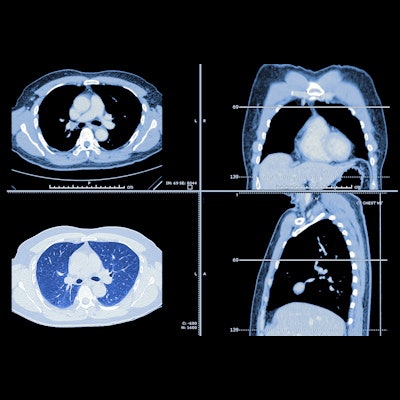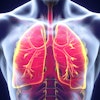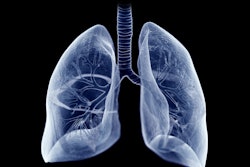
Are guidelines from the Fleischner Society for lung nodule follow-up effective for nodules found incidentally on CT rather than on screening? It's not completely clear, according to research published August 29 in the Journal of the American College of Radiology.
The issue needs to be addressed in order to best track patients with incidental lung findings, wrote a team led by Dr. Farhood Farjah of the University of Washington in Seattle.
"One potential challenge of translating [the Fleischner Society's lung nodule management] goals into guideline recommendations is the lack of information on the probability of lung cancer among individuals with incidentally detected lung nodules," the group explained.
The team noted that incidental lung nodules are found in some 1.57 million people each year in the U.S. The challenge is determining which of these nodules need to be worked up with additional imaging and biopsy, a process that can be costly and lead to patient morbidity.
The 2017 Fleischner Society guidelines have two goals: reduce unnecessary CT imaging follow-up of nodules in patients with a less than 1% risk of lung cancer and recommend how patients with nodules and more than a 1% risk of lung cancer should be tracked, Farjah and colleagues noted.
But how do these goals -- and the guidelines developed to achieve them -- translate to effective follow-up of incidentally identified lung nodules?
Farjah and colleagues sought to address this question via a study that included information from 5,444 patients with solid nodules incidentally found on CT. They used the 2017 Fleischner guidelines to define the nodules based on patient smoking status and nodule size and number. The team investigated whether patients had received a lung cancer diagnosis within two years of identification of the incidental nodule.
More than half of study participants were female and more than half were current smokers. Median nodule size was 5.5 mm, and 55% of individuals included in the study had multiple. Of the 5,444 patients, 3.9% (214) received a lung cancer diagnosis within two years of the original nodule discovery.
The investigators found that among 51% of the study cohort, the Fleischner Society goals and recommendations matched, accounting for 91% of lung cancer cases.
"We found no clear evidence of malignment between Fleischner Society guideline recommendations and their stated goals of avoiding further evaluations when the probability of lung cancer is [less than] 1% and pursuing further evaluations when the probability of lung cancer is [equal to or more than] 1%," the team wrote.
The results appear to suggest that yes, the guidelines are effective in a population of patients with incidentally identified lung nodules, the team noted, but more research is needed.
"Future steps for investigators include evaluating the probability of lung cancer in other,
larger populations and with more granular data on lung cancer risk factors (e.g., family history, nodule density) to allow better risk stratification," Farjah et al concluded.





















